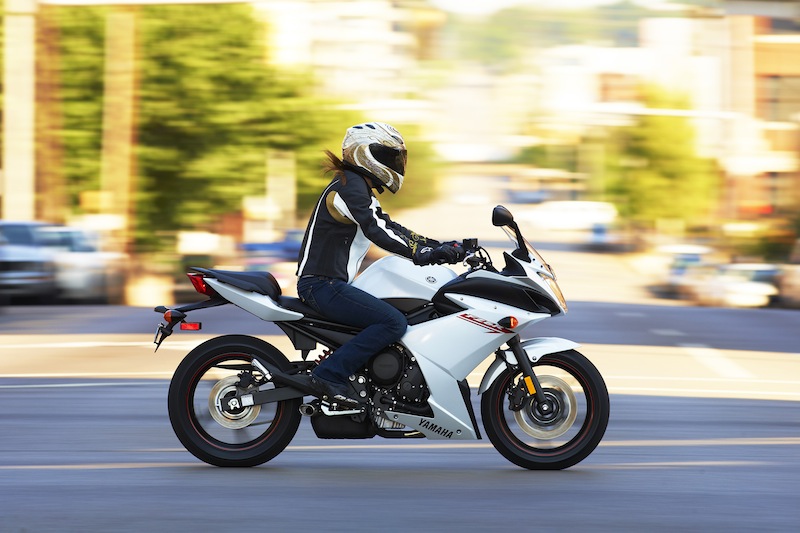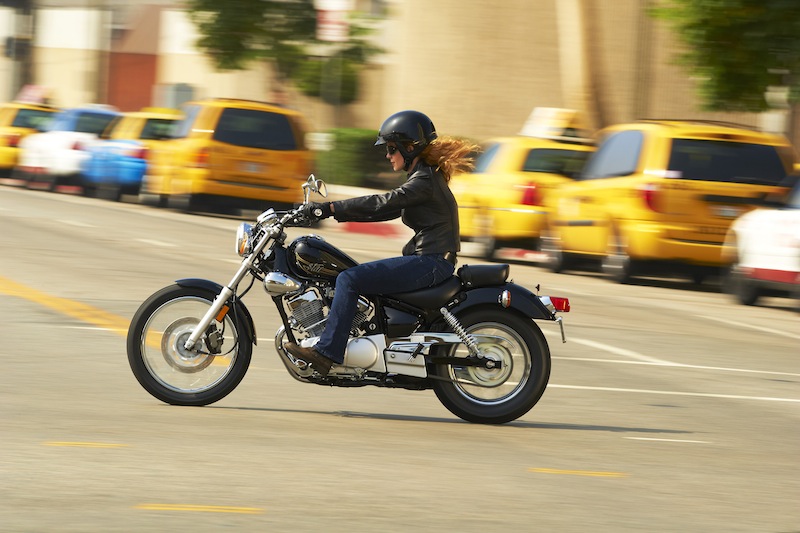 |
 |
Suggestion
Buy a smaller bike similar to the one you learned on in the training class. Suggestions include, but arent limited to, the Honda Rebel 250, Honda Nighthawk 250, Suzuki Boulevard S40, Suzuki GZ250, Kawasaki Eliminator 125cc, Buell Blast 500cc, or Yamaha V Star 250cc. Many first timers typically choose one of these as their beginner bike, so you should be able to find a quality used one. Not only will you feel more confident on a smaller motorcycle, but youll also spend less on insurance for a bike with a smaller displacement, especially if its a previously owned model. Plus, if you drop the bike, youll probaby be able to pick it up. Spend as much time as you need on this bike. Youll know when youve outgrown it and are ready to transition to a larger motorcycle.
Scenario #2
You breezed through the MSF class. Riding a motorcycle came easier to you than you thought it would. You know you can handle a bigger bike, but everyone is telling you to start small.
Suggestion
Start with a motorcycle thats on the low side of the middleweight category. This includes, but is not limited to, the Harley-Davidson Sportster 883, Honda Shadow Spirit 750 CS, Suzuki Boulevard C50T, or Yamaha V Star 650. A 600cc or higher is usually considered an aggressive entry-level motorcycle for confident new riders or a step-up motorcycle for previously skittish beginners. Some riders find this size of machine to be their end-all motorcycle because they can customize it the way they want. Other riders outgrow this size. Either way, youll get a lot of motorcycle for your money in this category.
Scenario #3
You breezed through the MSF class and found that youre not really into the cruiser style of motorcycle. Youd rather start on a standard street-style machine.
Suggestion
Youll be hard-pressed to find an entry-level, low-displacement motorcycle in this class, but the middleweight street bikes tend to be lightweight and fairly easy to handle. Suggestions include, but are not limited to, the BMW F 650 GS, Ducati Monster 696, Honda Nighthawk 750, Suzuki SV650, Triumph Bonneville, Yamaha FZ6 (600cc), and Kawasaki Ninja 500 or 650R. Motorcycles in this category tend to have higher seat heights to allow for more ground clearance, so a rider with a shorter inseam should feel confident in his or her riding skills before hopping on one of these bikes. Note that some of these motorcycles are no longer offered as new models, so youll need to find one on the used market.
Scenario #4
Motorcycles have been in your life for a long time. Perhaps you rode dirt bikes as a kid, or a close family member or friend rode a motorcycle while you were growing up. Youve only recently taken the MSF class, but you feel confident that you can ride just about anything. Height isnt an issue for you.
Suggestion
Cruisers that are 800cc and higher are for new riders who possess the “three Ms”—muscle, mental confidence and miles under them—which may come from an experience like riding a dirtbike. There are a variety of motorcycles with varying seat heights in this category. Often, the more powerful a motorcycle, the lower the seat height (big touring bikes excluded). Some suggestions include, but arent limited to, the Harley-Davidson Dyna Street Bob, Harley-Davidson Sportster 1200 Low, Kawasaki Vulcan 900, Yamaha V Star 1100 or 1300, Suzuki Boulevard S83, or BMW R 1200 GS. Again, these bikes should be considered only by confident and strong new riders with some type of experience under their belts.
Scenario #5
You took the MSF class and now realize you want a sportbike, not a cruiser.
Suggestion
Only a few manufacturers are making true sportbikes for entry-level riders. Beginner sportbikes are defined as those with low seat heights and/or small displacements. Currently, the only new models that fit this description are the Kawasaki 250R and the Honda CBR250. Go any larger than those models and youre into the full-blown sportbikes, which are not well-suited for true-blue beginners.
–
Looking for more information about picking a starter bike? Return to the Choosing Your First Motorcycle section of the WRN Beginners Guide.
Related Articles
Riding Right: What to Consider When Buying Your First Motorcycle
Beginners Guide: Motorcycles to Get Started On
New Vs. Used Motorcycles: What’s the Better Buy for You?
The Lowest of the Low Motorcycles

A good option for those who did well in the MSF course but are either new to riding or on the smaller side – the KTM 390 Duke is a great bike. It has plenty of power (check out Google reviews) if you need to get on the highway and so you won’t outgrow it quickly, but is light enough for the new rider. It is a new bike for 2015, but at a very affordable price point. I love mine!
I went from my Vespa LX150 (150cc) to Triumph Thruxton (900cc) it’s definitely a bigger and definitely a bike not a scooter, but it felt pretty good from day one. Still does. I imagine a sportster or something sometimes, and I often feel like I have to work more on long rides than my husband or our friends, ’cause they’re all kick-back after fourth gear with their feet on the front footrest. That said, I wouldn’t trade. Just like to try other people’s bikes every on once in awhile to see how it is. And of course, I ride my little Vespa about running errands (can’t really put the bag of groceries on the Thruxton without looking silly!) The Ninja 650 seemed like a decent choice around buying’ time — I can put feet flat on the ground and then some — but ultimately, the posture on those seems like so much more work. I think I made the right choice.
I’ve been reading a lot of places that the Kawasaki Ninja 500 is actually a pretty decent bike to start on. I’ve been checking into this style more because I live in the city and traffic is crazy here. I want something with a little bit more get-up and go if I need to get out of the way. Not to mention it’s very windy. With a 250cc motorcycle many riders report the bike being too light for hard interstate winds causing the bike to “go all over the place'” whereas the 500 has more weight and stands up to it better. From reading, it sounds like the 500 doesn’t take as much finesse to use safely but still has enough power for some interstate traffic (including camping, with lots of rests!).
Thank you! I’ve taken the MSF class and been riding a scooter for two years (and 4500 miles). My instinct has been telling me that I don’t need a less than 500cc motorcycle but all I’ve been hearing is “start small.” It’s like I’ve been letting myself get talked out of what I feel is the best bike for me. Thanks for the great guide.